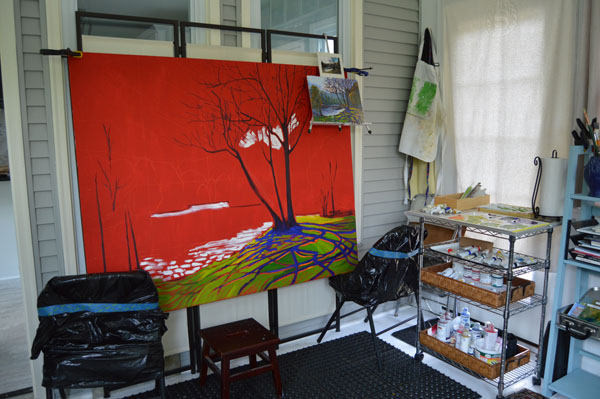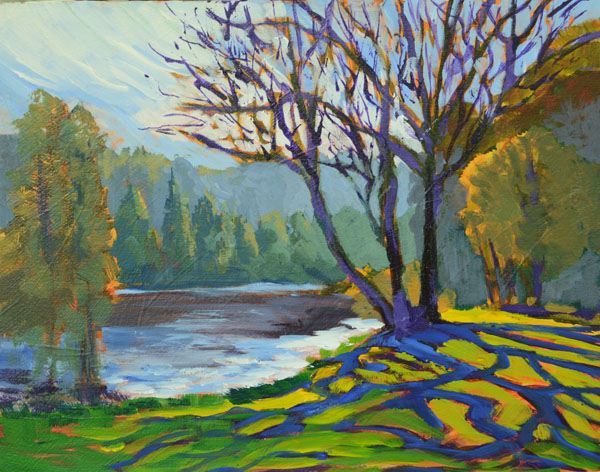
Recently I have had the desire to paint big, to expand some of my small studies into larger pieces. I want to paint big because it’s physical. I want the size of my canvas to match the power of the landscape and the boldness of my colors. I want to fence with a canvas as big as I am. Painting small is playing it safe. Painting large may expose big mistakes, but I’m willing to take the risk. As my friend William Herring says, “If it isn’t breathtaking, why even start?”
In preparation, I energized a 48×60” canvas with a base coat of carmine gesso. I posed a question on Instagram and Facebook about which study to enlarge. The winner was “Sandhill Shadow Web”.

11×14″
Acrylic on panel
©2015 Lucinda Howe
$425
But then I had to make room in my studio to paint.
My studio is small, a renovated Florida room on the back of the house, only 12 feet by 12 feet. There are two windows and a door in the wall between the kitchen and the studio. The other three sides are windows with east, south, and west exposures. There is no wall space at eye level. I have a counter height work table for horizontal work and an easel that accommodates small pieces. But I don’t have an easel that will hold my 48×60” canvas. So I improvised a set up using a folding screen and two folding chairs to support the weight of the canvas. I can reach the top standing up and I sit on a low stool to paint the bottom section.
This worked well until I went to back up and look at the painting from a distance. I could only move back about 10 feet, not far enough for such a large piece. So I got out my reducing glass. A reducing glass is the opposite of a magnifying glass. It makes things look smaller and further away. This helps me see how the composition is working.

Now there’s a physical rhythm, like a fencing match.
- Paint.
- Step back and observe with the reducing glass.
- Riposte.
- Evaluate.
- Repeat until the power of the landscape vibrates on the canvas.
It’s a longer match than a plein air study, but the potential result is greater. Check back next week to see the result.